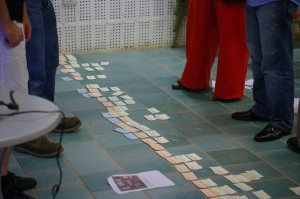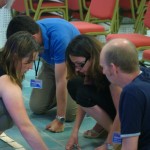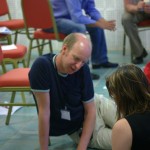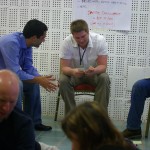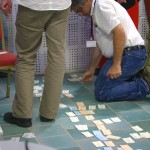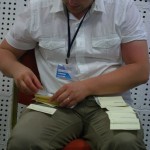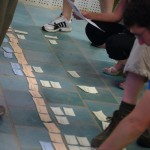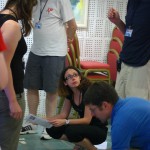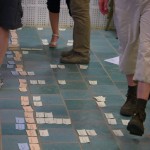New new new! Product development game at XP2009
The “New New NEW! Product development game” is a simulation we are developing. Participants experience various agile planning practices, so that they can create a development strategy that fits their needs, rather than following some arbitrary rules out of a book. Last week at XP2009 we did the first public run. Here is a brief report accompanied by photos from that workshop.Participants in this game can experience four different ways of planning a product:
- “Traditional” linear backlog planning we know from Scrum and eXtreme Programming,
- User Story Mapping, popularized by Jeff Patton. This takes into account User goals and actions. It can help you build a working application soon, taking into account as many goals as feasible,
- Dimensional Planning, popularized by Koen Van Exem. Like User Story Mapping, it focuses on the medium to long term. It helps to develop a Minimal Marketable Feature Set, trying to deliver a broad application in the simplest form possible (also known as a ‘Dirt Road’ solution).
- Kanban, popularized by David Anderson and others. This can be combined with the approaches above, but in this game we let participants choose to develop one Minimal Marketable Feature (MMF) at a time, where they have to determine what the next MMF is after developing the previous MMF.
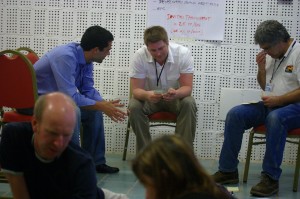
creating a Minimal Marketable Feature
We played two rounds, in each of the rounds participants chose an approach to plan and deliver features. For some reason nobody chose “traditional” backlog planning. With User Story Mapping and Dimensional Planning, three releases are planned and executed in sixty minutes. With Kanban as many MMF’s as possible, one MMF at a time, as fast as our fictitious developers can develop them. The groups that used Kanban got surprises after each MMF, both strategical (e.g. external customers change their mind) and technical (developers have higher or lower throughput). The other teams got such surprises after each release.
What implications that has I leave up to your imagination, alternatively you can come play the game some time ![]() .
.
The game ran reasonably well for a first time. The participants had good fun and learning, especially in the first round. We got good suggestions to run the game differently the next time. Using the same set of stories for the two rounds acted a bit as a spoiler. The team that tried kanban in the second round finished very quickly; they had done dimensional planning in the first round, and were very quick to determine MMF’s and develop them.
This supports of course the theory that combining those things can be valuable, but makes playing the second round less fun. The team that tried kanban in the first round had no previous knowledge of the features and needed a lot more time – basically they went through the product vision again for every MMF, which was quite time consuming.
The Kanban part of the simulation needs a bit more work. We are probably going to develop a different set of cards that visualize throughput and one piece flow better. Due to the developerless nature of the game, an MMF completes at once in the simulation, which feels strange.
This week we will play the next iteration, as part of our Agile Product Development training. Probably only one round, with User Story Mapping and Dimensional Planning. The audience here is mostly non-technical people (C*O, business analysists, testers and some developers) and we focus on effective and efficient ways of release planning and story writing. We might introduce Kanban and dimensional pull on the side, with comments and ‘show don’t tell’. I was inspired by seeing how Wim van de Goor and Stefan van den Oord used a task board during their Scrum Board Game to track and show progress of the workshop itself.
- creating a Minimal Marketable Feature
Thanks to the participants for giving us critical and constructive feedback, and Marc Evers for editing drafts of this post.
